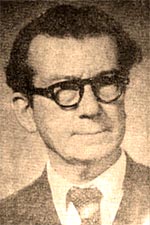4.1.1.26 The avant-garde movement in Cuban literature (1927 – 1930)

Vanguardism, as is sometimes the case in literature, was a somewhat fleeting and inhomogeneous movement, whose supporting focus was the need to reverse the prevailing modernist canons and romantic reminiscences.
In the Cuban case, it constituted the aesthetic counterpart to the national consciousness and rebellion that had begun with the Protest of the Thirteen and continued for approximately a decade. Even its extinction in 1930—in terms of collective cultivation, as there would be isolated incursions later—has been attributed to the open political orientation of many of its followers, with the possibility of fighting against Gerardo Machado’s dictatorship.
Conceptually, the movement aimed to deconstruct romantic sentimentalism without contributing new ideas, but it served as a breeding ground for later movements, among which pure, social, and negrista poetry stand out, all heirs to the innovative impetus but with more solid aesthetic postulates.
From the point of view of form, the movement was characterized by its subversion of traditional punctuation, the abolition of capital letters, and non-traditional typographical orders that sometimes shaped what has come to be called visual poetry, examples of which can be found in the work of Manuel Navarro Luna, whose collection of poems, “Surco,” published in 1928, was perhaps the most representative of the movement.
The exaggerated use of metaphor and fundamentally of prosopopoeia or personification, led to a certain impoverishment of rhetorical resources, which was especially evident in the field of machinery and industry, to the detriment of natural landscapes, or rather, it introduced an emotional distancing, the abolition of romantic sentimentality with respect to the environment and the ironic perception of reality.
Roberto Fernández Retamar, in his thesis on contemporary poetry, notes about this movement: “it caused a violent shock in the most external part of our poetry, but it did not have the persistence or intensity to leave us works of great importance.”
In another sense, he had also pointed out: “If we pay attention to the ideal content (…) of our avant-garde poetry, we will notice in it a desire for insurgency, for novelty always, frequently for prophecy, which denounces a romantic attitude from which, in themes and form, it was so eagerly avoided.”
Many Cuban poets adopted avant-garde positions or touched on this trend in parts of their creative work. They would later evolve toward other aesthetic paths, but without completely breaking with the movement’s discoveries. Among the most significant are Manuel Navarro Luna, Félix Pita Rodríguez, Mariano Brull, Regino Pedroso, and Eugenio Florit; although this poetic approach would also influence essential poets of our lyrical poetry, such as Nicolás Guillén.
Among the editorial spaces opened to this movement were, first and foremost, the “Revista de Avance,” but also the Diario de la Marina and the more politically oriented “Atuei.” The magazines “Antenas” and “Orto,” from Camagüey and Oriente, respectively, also contributed to the movement’s dissemination.








